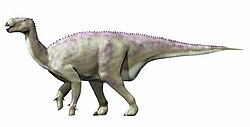| Weald Clay | |
|---|---|
| Stratigraphic range: Hauterivian-Barremian, | |
 Weald Clay exposed at Clock House Brickworks | |
| Type | Geological formation |
| Unit of | Wealden Group |
| Sub-units | Horsham Stone Member |
| Underlies | Atherfield Clay Formation |
| Overlies | Tunbridge Wells Sand Formation |
| Thickness | up to 460 m |
| Lithology | |
| Primary | Shale, Mudstone |
| Other | Siltstone, Sandstone, Limestone, Ironstone |
| Location | |
| Region | England |
| Country | United Kingdom |
| Type section | |
| Named for | Weald |
 Extent of the Weald Clay within the Weald Basin, shown with horizontal lines | |
Weald Clay or the Weald Clay Formation is a Lower Cretaceous sedimentary rock unit underlying areas of South East England, between the North and South Downs, in an area called the Weald Basin. It is the uppermost unit of the Wealden Group of rocks within the Weald Basin, and the upper portion of the unit is equivalent in age to the exposed portion of the Wessex Formation on the Isle of Wight. It predominantly consists of thinly bedded mudstone. [1] The un-weathered form is blue/grey, and the yellow/orange is the weathered form, it is used in brickmaking.
Contents
The formation was deposited in lagoonal, lacustrine and alluvial conditions that varied from freshwater to brackish. [2] The climate at the time of deposition is thought to have been semi-arid, [3] and prone to fire. [4] The clay alternates with other subordinate lithologies, notably hard red-weathering beds of ironstone, limestone (Sussex Marble) and sandstones, notably including the calcareous sandstone unit referred to as the Horsham Stone. It has a gradual, conformable contact with the underlying Tunbridge Wells Sand Formation, and has a sharp, unconformable contact with the overlying Atherfield Clay Formation, a shallow marine unit deposited after marine transgression during the Aptian.




